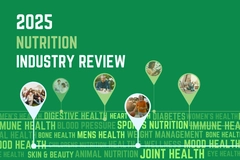
- Industry news
Industry news
- Category news
- Reports
- Key trends
- Multimedia
Multimedia
- Journal
- Events
- Suppliers
Suppliers
- Home
- Industry news
Industry news
- Category news
- Reports
- Key trends
- Multimedia
Multimedia
- Events
- Suppliers
Suppliers
FDA reveals new strategy to bolster fragile infant formula space as concerns remain over resilience

29 Mar 2023 --- As the first part of the scathing testimonies on the US’ infant formula shortage before Congress draws to a close, the US Food and Drug and Administration (FDA) reveals its immediate actions and strategy to increase resiliency in the country’s infant formula supply and market, noting that “safety and supply go hand-in-hand.”
Following the closing of Abbott’s plant in February of 2022 due to contamination of Cronobacter sakazakii, the US was forced to implement Operation Fly Formula to feed its most vulnerable citizens, infants and toddlers. Since then, the shortage has remained ongoing, with formula producer Reckitt recalling 145,000 cans of formula earlier this year due to the same contaminant.
Now the FDA has released an outline of nine key points to avert any future shortages or contaminations.
“Safety and supply go hand-in-hand,” states Dr. Robert M. Califf, FDA Commissioner. “We witnessed last year how a safety concern at one facility could be the catalyst for a nationwide shortage. That’s why we are looking to both strengthen and diversify the market, while also ensuring that manufacturers are producing infant formula under the safest conditions possible.” Former FDA deputy director told Congress the infant formula crisis was a "preventable tragedy."
Former FDA deputy director told Congress the infant formula crisis was a "preventable tragedy."
“Now, with this strategy, we are looking at how to advance long-term stability in this market and mitigate future shortages, while ensuring the formula is safe.”
This comes as Dr. Peter Lurie, the president and executive director of the Center for Science in the Public Interest (CSPI) and the FDA’s former deputy commissioner, Frank Yiannas, testified before the House Committee on Oversight and Accountability Subcommittee on Health Care and Financial Services yesterday.
Both testified to the lack of oversight by the FDA, its “failure” to correctly respond to the crisis or to take the proper steps to prevent a new one and the unscrupulous actions of some industry players.
“The infant illnesses and deaths due to Cronobacter, the Abbott recall and the cascading and devastating effects it had on infant formula availability and families in our country was all a preventable tragedy,” Yiannis testified.
Thwarting the next crisis
The FDA’s plan is to utilize the existing strategies outlined in the Food and Drug Omnibus Reform Act of 2022 and consult with other federal and government partners to enact the following:
- Ensure the industry is aware of requirements to develop and implement redundancy in its risk management plans and to develop mitigation plans against potential disruptions that could impact production.
- Continue to enhance inspections of infant formula manufacturers by expanding and improving infant formula training for investigators.
- Expedite reviews of premarket submissions for new infant formula products to mitigate or prevent shortages.
- Continue to monitor the infant formula supply and develop a forecasting model to enable the FDA to prepare for and mitigate future supply disruptions.
- Engage with US government partners who play a role in mitigating other factors that may influence the infant formula supply to sustain the safe, continuous production of infant formula.
- Engage with the US Department of Agriculture to support efforts to build resiliency within its Special Supplemental Nutrition Program for Women, Infants and Children.
- Continue to advance the agency’s Strategy to Help Prevent Cronobacter sakazakii Illnesses Associated with Consumption of Powdered Infant Formula.
- Improve the agency’s consumer education materials relating to infant formula on its website.
- Enhance and leverage the FDA’s partnerships with health care providers and professionals to further expand its consumer education program.
According to Dr. Susan Mayne, the director of the FDA’s Center for Food Safety and Applied Nutrition: “The events that led up to and ultimately resulted in the voluntary recall of certain infant formula products in February 2022 shocked the infant formula supply in the US, creating an unparalleled challenge for parents and caregivers.”
“The immediate strategy released today will play an important role in increasing the resiliency of the infant formula market as the agency continues its critical work to improve industry’s processes and programs for the protection of those who rely on infant formula while incentivizing additional infant formula manufacturers to enter the market,” she explains.
Weighed and found lacking
Though the FDA published its new guidance at 9:00 AM EST, former deputy director Yiannas stated before Congress later that day that he believed the state of the infant formula industry had not changed in any considerable way since the beginning of the crisis.
“The public health surveillance system for this pathogen remains insufficient, the necessary safeguards have not been advanced at an adequate pace to prevent future illnesses and the infant formula supply chain continues to lack serious resiliency,” he elaborates.  Lurie explained to Congress that the origins of the crisis could be traced back to Abbott’s Sturgis plant.
Lurie explained to Congress that the origins of the crisis could be traced back to Abbott’s Sturgis plant.
“In other words, the nation remains one outbreak, one tornado, flood or cyber-attack away from finding itself in a similar place to that of February 17, 2022.”
To the point, infant formula producer Perrigo recalled formula manufactured at the company’s Gateway Eau Claire, Wisconsin manufacturing facility that were produced there from January 02, 2023 to January 18, 2023, for Cronobacter sakazakii contamination on March 17.
“FDA’s performance failed to live up to the high standards American consumers expect and deserve from the agency responsible for keeping our food supply safe,” said Yiannis. “A whistleblower report went undelivered to senior agency staff for months and the agency took too long to schedule a repeat inspection of the Sturgis facility, even as Cronobacter sakazakii cases continued to be reported, thus delaying the resultant recall.”
“The agency ordered an internal review of its own response but that report, while offering many strong recommendations, failed to provide a clear account of the events surrounding the recall or the mistakes made by agency officials.”
Industry also to blame?
Lurie further explained to Congress that the origins of the crisis could be traced back to Abbott’s Sturgis plant, noting that the plant had been forced to destroy formula due to Cronobacter sakazakii two full years before the crisis and never reported it to the FDA.
“It was there that, according to a whistleblower, there were lax cleaning practices, falsified records and relevant information hidden from FDA inspectors,” Lurie testified. “These conditions had existed for years, but it took the addition of a pandemic, with its own supply chain problems, Abbott Nutrition’s deficient manufacturing practices and, later, the war in Ukraine, to produce a full-blown shortage.”
“Americans deserve a food program that is transparent, effective and accountable,” Lurie concludes. “The formula crisis laid bare the high level of dysfunction, breakdowns in communication and lack of clear lines of authority that characterized the agency’s response.”
By William Bradford Nichols











